Annette Lake Trail
Washington State is a treasure trove of natural wonders & one gem that stands out is the Annette Lake Trail. Nestled in the stunning Cascade Mountains, this trail offers outdoor enthusiasts a perfect blend of scenic beauty, a serene alpine lake, & a rewarding hiking experience. While the trail is a decent round-trip length of 7.5 miles, hikers will discover the crystal-clear lake surrounded by towering peaks a sight well worth the trek. In the summer, Annette Lake boasts a colorful landscape & entices you with a refreshing dip in its glacier-fed waters. However, when snow is abundant, be prepared to navigate around avalanche chutes to get to this magical destination!

Please note: This post contains affiliate links.
This means that, at no extra cost to you, I may receive a small commission if you make a purchase through my affiliate link.
You may read my full disclosure policy here.
Quick Trail Stats for Annette Lake Trail
📈 AllTrails rating: Moderate
🥾 Length: 7.5 miles RT
🏔️ Elevation gain: 1,978 feet
✅ Northwest Forest Pass required during warmer seasons; Sno-Parks Permit required in the winter
🐶 Leashed dogs are welcome

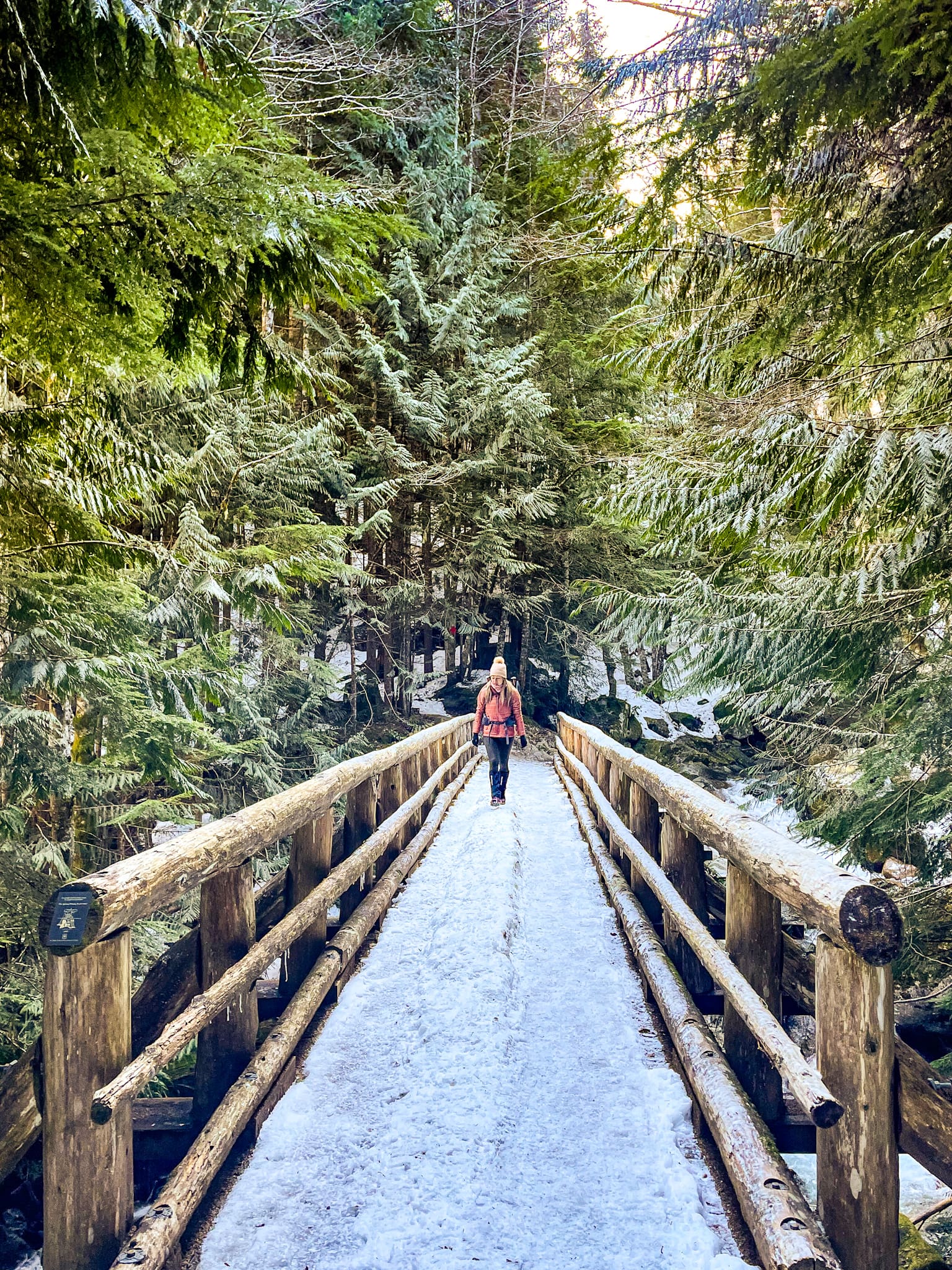
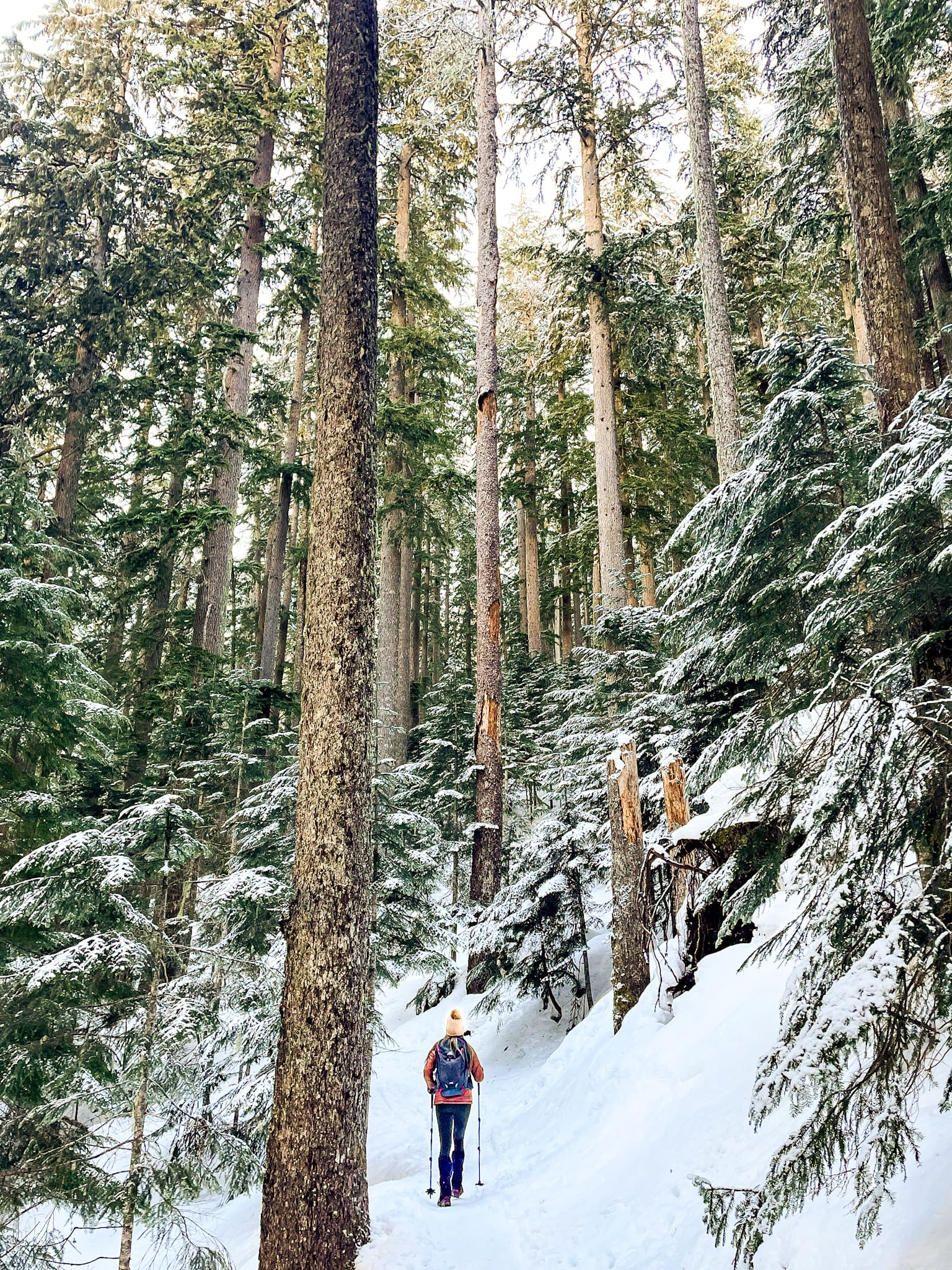
Directions to Annette Lake Trail
About an hour’s drive from Seattle, the Annette Lake Trail is located near the popular Denny Creek at Exit 47 off I-90. Head towards Tinkham Road to your right & take a left on NF-55 for 0.4 miles until you reach the paved parking lot at the end of Asahel Curtis Road.
There is a parking lot at the trailhead, but it can fill up quickly on weekends & holidays. A Northwest Forest Pass is required to park at the trailhead, which can be purchased online or at various locations throughout the area. The pass costs $30 for an annual pass or $5 for a day pass. Make sure to clearly display the pass on your dashboard to avoid a ticket, as forest rangers frequently patrol this region. Also, there are no restrooms or facilities at the trailhead, so prepare yourself before you arrive.
Enter a Magical Forest of Cedars, Hemlock, & Douglas Fir
The Annette Lake Trail begins just to the right of an information kiosk & the Asahel Curtis Nature Trail. The well-maintained trail has a steady, consistent incline & several degrees of switchbacks keep the trek interesting. Its path forges through an old growth forest alongside small waterfalls & water crossings with the first one at 0.2 miles called Humpback Creek. As you continue on, you will hear the thunderous sound of Humpback Falls tumbling down the mountain. After about a mile in, pass through an open wildflower field with power lines to cross over the Iron Horse Trail. Shortly thereafter, take a deep breath as this is where the true elevation gain begins.
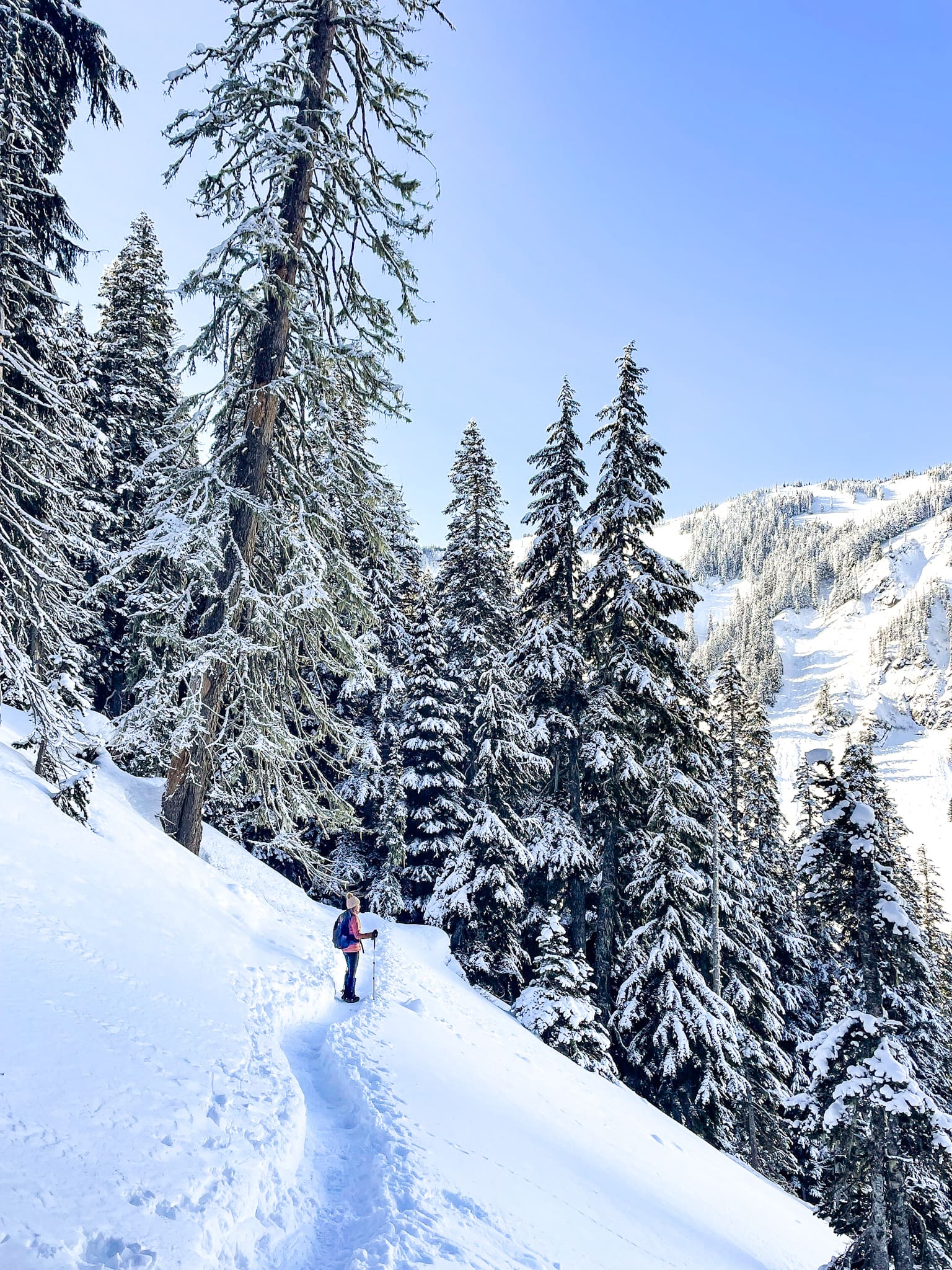
An Alpine Lake Worthy of a Visit All Year Round
In the next 1.5 miles of talus slopes, make your way through the forest & several small water crossings. You will notice a couple fallen trees have been turned into makeshift bridges, courtesy of the Washington Trails Association! As you make your way up, take some time to enjoy the views of Granite Mountain to the north & Humpback Mountain to the west. During the summer, immerse your senses in a vast range of beautiful wildflowers & berry bushes. Just remember to pack your bug repellent as the mosquitoes can get pretty aggressive out here!
In the winter & early spring, make sure to check the snow conditions ahead of your visit since sketchy avalanche chutes can become a threat! Be cautious, as the final stretch of the Annette Lake Trail follows up alongside some massive boulder fields, which is notorious for dangerous avalanches. Continue reading to find out more about avalanche safety tips.
After you cross the final talus slope, you’ll reach the pristine alpine Annette Lake! Enjoy a snack while soaking in the mountain backdrop of Abiel Peak & Silver Peak! Look towards the eastern shore & find a waterfall flowing delicately down the mountain. If you want to experience a different vantage point, you can even hike around to the other side of the lake as well!
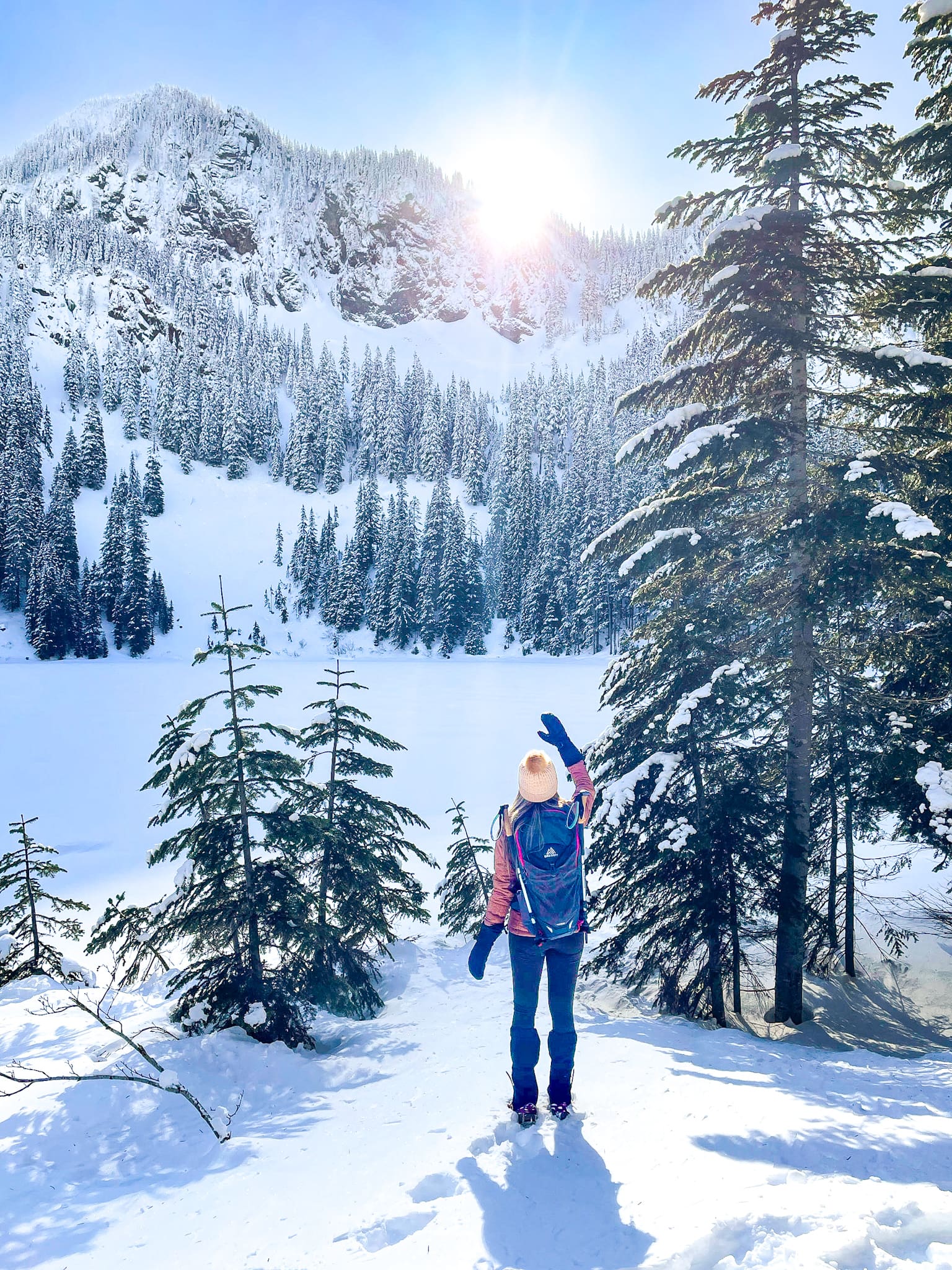
Camping Near Annette Lake Trail
For those who want to spend more time in the area, there are several campsites available near Annette Lake Trail. The most popular campsite is the Annette Lake Campground, which is located near the trailhead & offers basic amenities such as toilets & fire pits. An alternative site that is more secluded within the forest is the Denny Creek Campground just a short distance from the trailhead. Hikers can also enjoy easy access to several other nearby trails, including the Melakwa Lake Trail & the local’s favorite, Franklin Falls.
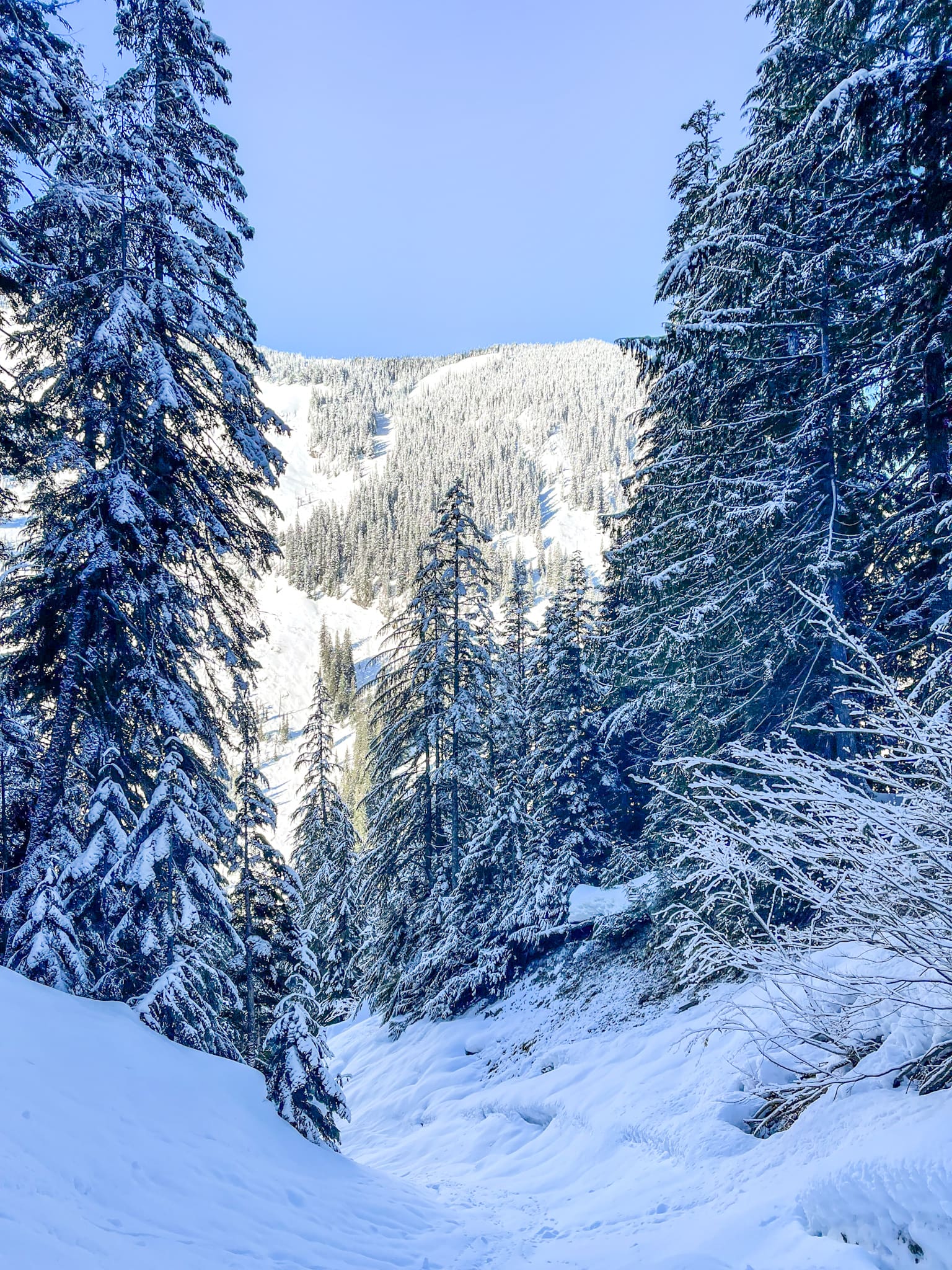
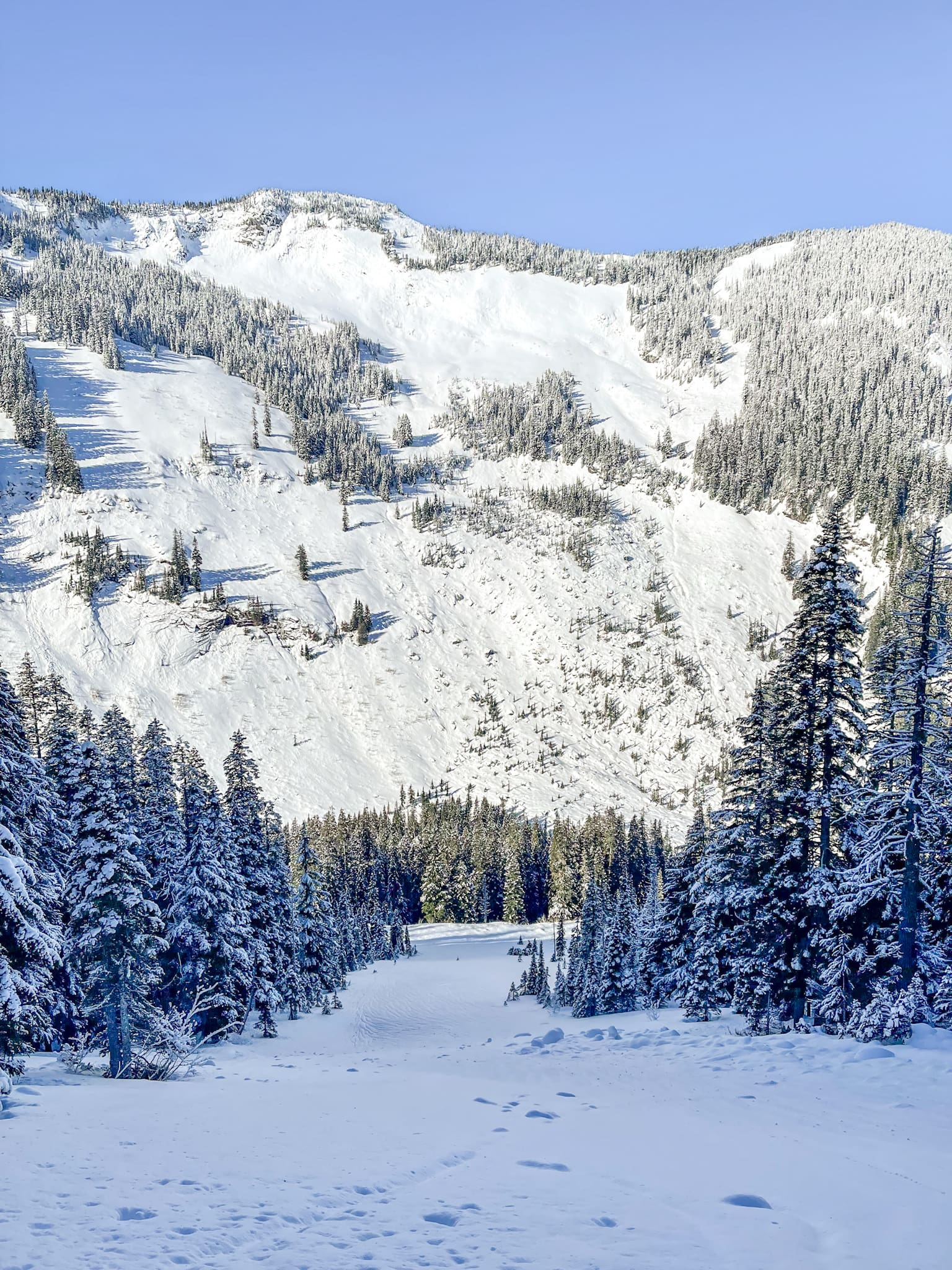
Navigating Around Avalanche Chutes
Be cautious during snow seasons on the Annette Lake Trail as you make your way across several avalanche chutes. When crossing terrain, watch for any areas with chute-like clearings or large vertical patches of trees missing from a slope. These are often signs that large avalanches have run through there, creating their own tracks down the hills.
Foremost, use common sense & turn back if you feel the path is not safe enough to walk on. You can always return when enough snow has melted off. If you choose to navigate past the avalanche chutes, don’t group together on the exposed terrain. Allow enough distance between hikers & do not linger on the trail.
While some parts of the trail becomes hard packed by ice, other areas can have deep hidden pockets of snow. Use hiking poles to help you navigate safely along the steep & narrow path. To add extra traction to your footing, bring along a pair of microspikes that you can easily slip on.

Packing List for Annette Lake Trail
- Headlamp
- Handheld GPS system
- Hand warmers
- First aid kit
- Protein-filled snacks & water in a refillable bottle
- Portable backpacking stove
- Hiking daypack
- A map & fully charged phone in case of emergencies
Angella’s Travel Tips
- As with any outdoor activity in the Pacific Northwest, you want to prepare for the unexpected. Before you head out, check recent trail reports & weather updates to ensure a safe & enjoyable experience.
- In the winter, snowpack tends to freeze over the ground easily because of the thick tree coverage & narrow pathways. Therefore, I highly recommend bringing microspikes & hiking poles as it can get pretty slippery out there!
- When snow begins to melt, the avalanche danger is high in these areas. Be sure to check current avalanche conditions before heading out.
- In an effort to preserve the wild in our ‘wild’erness, it is important to be conscious of the effects our actions may have on public lands, the animals, & even other nature enthusiasts. The 7 Leave No Trace principles provide a framework for enjoying the outdoors while leaving the smallest footprint possible. Learn more about how you can apply the Leave No Trace principles on your next adventure to help protect the beautiful places we all love so much.


Leave a comment